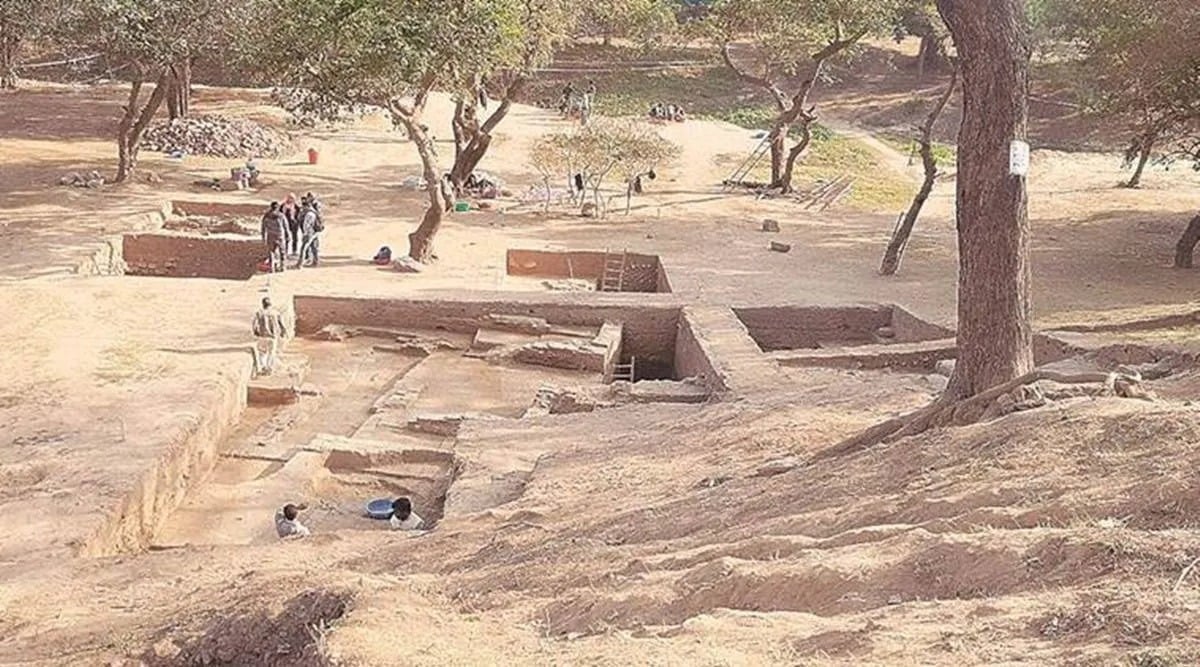
The Geographical Indication (GI) tag now protects Kannadippaya the rare tribal handicraft product from Kerala while making it a worldwide recognized craft. Kannadippaya has become the initial tribal handicraft product of Kerala to earn this status. The indigenous communities of the state have traditionally produced Kannadippaya as an item woven from reed bamboo inner layers which provides distinctive heat regulation. The status should help artist communities develop their abilities for future markets to embrace this sustainable craft.
-
The Geographical Indication (GI) tag now protects Kannadippaya the rare tribal handicraft product from Kerala while making it a worldwide recognized craft.
-
In Kerala's traditional craft heritage lies Kannadippaya which is an artful design of bamboo that also serves as a reflective surface because of its geometric patterns.
-
The handcrafted mat maintains both cultural importance and historical significance because it used to be presented to kings as an expression of tribute.
Key Aspects of Kannadippaya
Unique Craftsmanship
-
Its creation involves thinning inner slivers from reed bamboo (Teinostachyum wightii) producing a supple material with a shiny finish.
-
The fabric encompasses Pettikannadi, Moolikannadi, Ottakkannan alongside Randu Vari among its complex geometrical designs.
-
The bamboo mat both insulates during cold months and generates breezy chill in hot summer seasons.
Cultural and Historical Significance
-
Members from Oorali, Mannan, Muthuva, Malayan, Kadar and Ulladan, Malayarayan, and Hill Pulaya tribes traditionally practice its manufacture.
-
The intricate handicraft was historically given to monarchs to demonstrate their respect and artistic abilities.
Geographical Indication (GI) Recognition
-
Organisation: A GI tag protects the products created by Unarvu Pattikavargha Vividodesha Saharikana Sangham, Vanasree Bamboo Craft and Vanavibhava Shekaranasa units located in Idukki.
-
The first tribal handicraft from Kerala to receive this recognition.
-
Acquisition of this recognition became possible through joint efforts between the Kerala Forest Research Institute (KFRI) and intellectual property rights experts.
Economic and Social Impact
-
Through entrepreneurial opportunities the organization provides tribal artisans with the power to become independent.
-
The market entry for sustainable bamboo goods becomes possible through national and international access points.
-
Government involvement is needed to ensure easier access to markets for the handicraft industry according to the writer.
GI Tag Products In Kerala
Kerala holds numerous products which earned the Geographical Indication (GI) tag that showcases the state's cultural splendor along with its distinct natural elements. 31 Geographical Indication tags have been obtained by Kerala through recent records since the state covers multiple classifications which include agricultural products and manufactured goods and handicrafts.
-
Notable GI-tagged Products from Kerala:
-
Aranmula Kannadi
-
Alleppey Coir
-
Navara Rice
-
Marayoor Jaggery
-
Nilambur Teak
-
Vazhakulam Pineapple
-
Kuthampully Sarees and Dhoties
-
Tirur Betel Leaf
-
Wayanad Robusta Coffee
-
Palakkad Matta Rice
Challenges and the Way Forward
-
A structured market system stands as the primary challenge which prevents tribal artisans from growing their business.
-
The product needs collaborations between public authorities and private businesses in order to develop market penetration.
-
Young people must participate in artisanal crafts because it ensures the survival of traditional arts and crafts into the future.
-
Eco-friendly products gain international market demand which presents manufacturers with opportunities for worldwide market penetration.
Conclusion
The GI registration of Kannadippaya represents a new beginning to protect and market the tribal cultural heritage from Kerala. The practical knowledge that goes into Kannadippaya creation supports sustainable economic opportunities for traditional communities. The combination of market backing and public understanding about Kannadippaya can develop this symbol into a worldwide representation of artistic and ecological heritage from Kerala.



 Understanding the Kancha Gachibowli Protests: What Lives in Kancha Gachibowli? A Closer Look at Hyde
Understanding the Kancha Gachibowli Protests: What Lives in Kancha Gachibowli? A Closer Look at Hyde Haryana Declares Two Harappan Sites as Protected Archaeological Monuments: Mitathal and Tighrana
Haryana Declares Two Harappan Sites as Protected Archaeological Monuments: Mitathal and Tighrana Sagarmala Programme: Powering India’s Maritime Revolution
Sagarmala Programme: Powering India’s Maritime Revolution Mount Lewotobi Laki-Laki Volcano Eruption in Indonesia – Details & Impact
Mount Lewotobi Laki-Laki Volcano Eruption in Indonesia – Details & Impact CM Stalin Inaugurates India’s Largest Single-Location Solar Plant
CM Stalin Inaugurates India’s Largest Single-Location Solar Plant South Coast Railway Zone Approved: Key Milestone for Andhra Pradesh
South Coast Railway Zone Approved: Key Milestone for Andhra Pradesh Decline in Haryana Sex Ratio at Birth 2024
Decline in Haryana Sex Ratio at Birth 2024 Polar Vortex Shift Triggers Severe Winter Storm in the US
Polar Vortex Shift Triggers Severe Winter Storm in the US PM Modi to Inaugurate Z-Morh Tunnel: A Game-Changer for Jammu & Kashmir
PM Modi to Inaugurate Z-Morh Tunnel: A Game-Changer for Jammu & Kashmir






